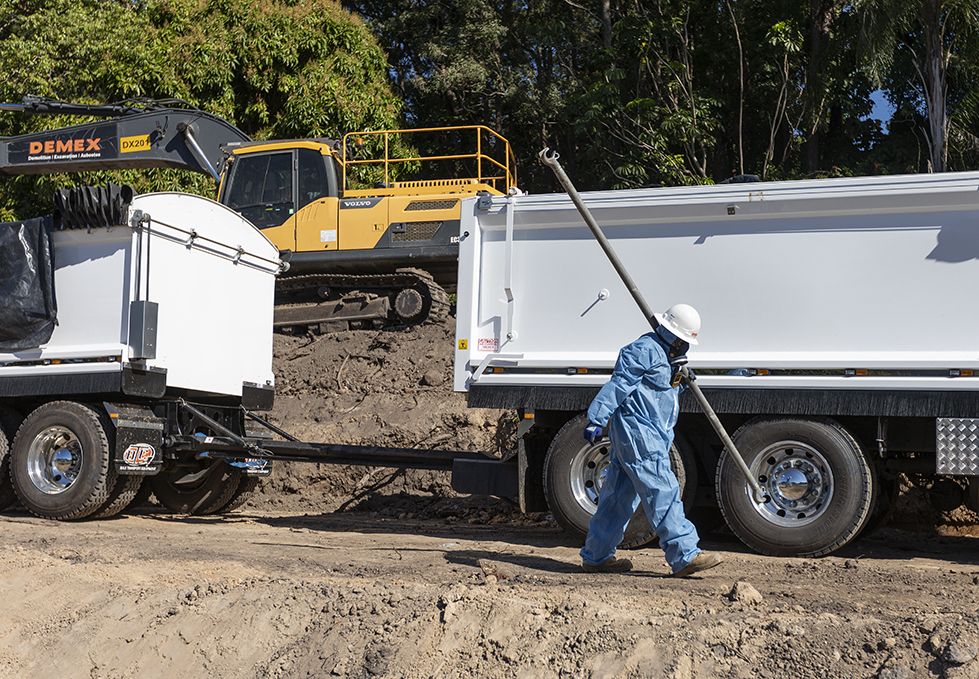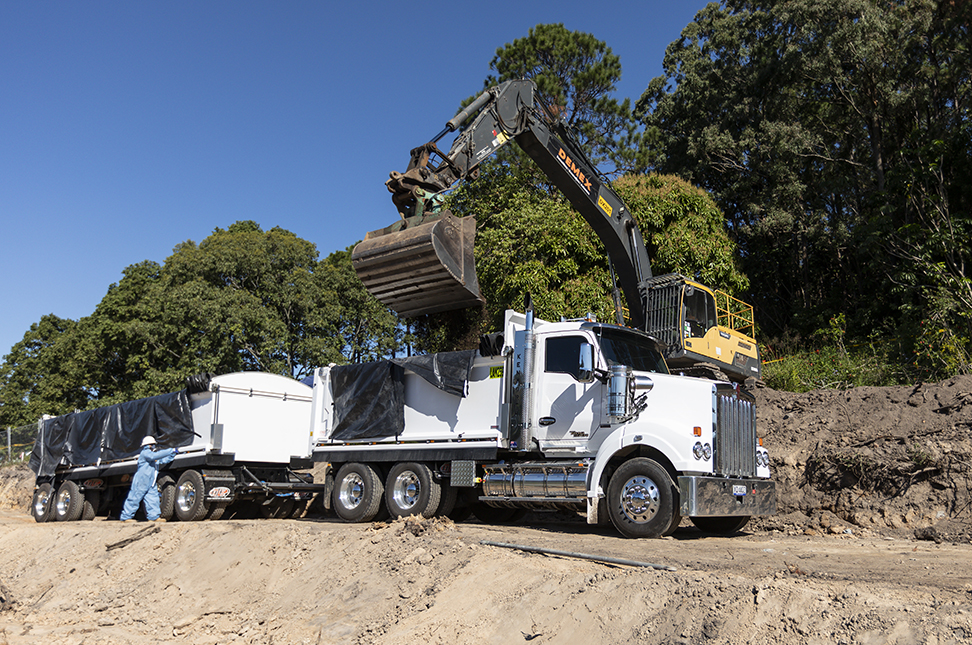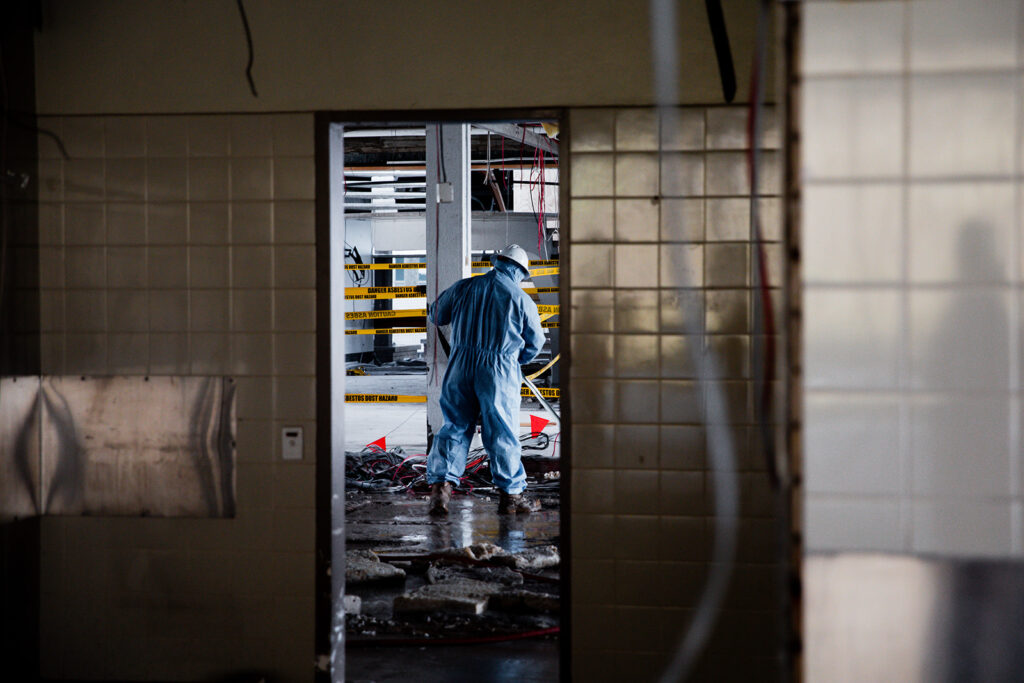How to manage asbestos risk on demolition projects in Australia

Few demolition project risks match the level presented by removal of hazardous materials and asbestos. From physical handling to environmental management, there are many factors to consider before, during, and after a demolition project is completed. In light of growing awareness associated with health issues arising from asbestos exposure, robust project management that accounts for safe removal of this hazard is critical. In our latest article we cover the factors around asbestos every project owner should consider to reduce risk and safely deliver their project.
Asbestos risk on demolition projects in Australia
Like many places around the world, during the period when asbestos was commonly found in building materials, its use was not regulated in Australia. Unfortunately, the harmful effects of asbestos weren’t understood either. In Australia its popularity as an internal and external building material from the 1950s to 1990 was based on its relative cost effectiveness and durability. We now know that during this period asbestos could be found in over 3,000 products, including fibro, flue pipes, drains, roofs, gutters, brakes, clutches, and gaskets in Australia.
Despite its relatively small population, this made Australia one of the biggest users of products with asbestos containing materials (ACM) in the world. It’s any wonder that structures being demolished today present significant risks to project owners and contractors engaged to undertake demolition works.
Today use of asbestos is banned and its removal is highly regulated in Australia, as it should be, although this was not always the case. Removal requires that a contractor is licenced and is fully compliant with relevant State and Commonwealth Government regulations laid out under the Health (Asbestos) Regulations 1992 (Asbestos Regulations) (under review) WorkSafe Australia, and in Queensland, Workplace Health and Safety Queensland (WHSQ).
In accordance with regulations, demolition projects should not commence until steps have been taken to identify and assess the asbestos on site and in materials (referred to as asbestos containing materials or ACM). Once a project is underway, risks must be eliminated or minimised with control measures, and throughout the project, these measures must be reviewed for effectiveness.
Concerns about asbestos were acknowledged only decades after it had been mined, used, and found to cause health problems (often lethal) for those exposed to it. In Australia and around the world, there is a growing number of people reporting to suffer from mesothelioma, a fatal disease affecting those inadvertently exposed to asbestos. In Australia, the annual average of those diagnosed is 701. The vast majority of these are male and many never recover. These statistics alone are cause enough to take every precaution, and then some, to keep people and projects safe.

Managing risks from asbestos on major projects
Managing the associated risks of asbestos removal is a daily concern for companies like DEMEX that operate in the demolition and construction industry. It’s a fact: Each day demands careful attention to identifying and managing asbestos hazards to protect employees and those directly or indirectly impacted by a demolition project, including those working for the project owner and other contractors, neighbours, and any other stakeholders. It’s no exaggeration to say ‘you can’t be too careful’.
On any demolition project, removal of asbestos must be prioritised according to risk and after taking into account the type of material, its condition, and the location of the ACM. Safe transport, storage and disposal are also critical considerations. This requires that demolition contractors have:
- Obtained relevant certifications for friable and non-friable asbestos removal and renew these as required
- Carryout annual health monitoring for asbestos removal employees
- Ensure mask fit tests are conducted for each employee involved in the removal works.
- Only trained employees must be engaged in asbestos removal on demolition projects
- Sourced independent assessment of the asbestos
- Identified the safest methods for removal and planned suitable control measures that ensure risks are eliminated.
- Ensure third party assessments are carried out for clearance of asbestos
There is no single ideal solution for large scale asbestos removal programs. Each project should be considered in terms of its specific requirements and draw on a range of measures that eliminate the risk of airborne asbestos fibres.
Let’s look at some of the measures that should be applied to major demolition projects.
Engagement of an independent asbestos consultant
A quick scan of cases where demolition companies have been fined and it’s easy to spot a common thread: the omission of appropriate control measures. Often this is a function of rushing work or simply ignoring the legislative requirements for implementing control measures. Project owners and demolition contractors who approach demolition works this way put themselves and everyone else involved at risk.
However, the risks can be identified and managed by engaging an independent licenced asbestos consultant. It is their job to undertake necessary checks, such as asbestos clearances, air monitoring, and smoke tests. In some cases, for example, for complex projects, there is even value in having a two-tiered consultant system, wherein each consultant performs specific roles. This creates an even greater degree of independence and provides confidence to the project owner that the asbestos removal will stack up against all legislative requirements.
Conduct an intrusive hazardous materials investigation
Hazardous materials can be found lagging within older buildings and structures, which is where the value of an intrusive site investigation is a worthwhile investment. Conducted as an audit, this will identify any additional hazardous materials that have been concealed previously and include dismantling of plant as required under controlled conditions, ensuring all hazardous materials are identified. Sample testing provides another layer of certainty, and when it comes to asbestos, certainty is a reassuring commodity.
Liaise with the regulator
While it may seem counterintuitive, it makes sense to notify the regulator about asbestos removal works. Not only does this keep communication lines open, it demonstrates transparency and builds trust that as project owner that you and the team you’ve engaged are committed to doing the right thing. Timely communication also provides an opportunity to outline the project approach and ascertain whether any issues could arise.
Work with licenced asbestos removalists
It may sound obvious, however only a licenced asbestos removalist should be engaged for asbestos removal projects. A licenced company that provides access to A Class technicians, the right equipment, vehicles, and quality processes to undertake safe removal of hazmat waste might sound like a no-brainer, however the surprising oversights that occur and lead to prosecutions should prompt any project owner and contractor to follow regulatory requirements to the letter of the law.
Have a plan in place
Major demolition projects should have a site-specific asbestos removal control plan (ARCP) that details the control measures and methods for removing asbestos. Putting together an ARCP means adhering to the requirements of the WHS Act and ideally using the Code of Practice 2021 for How to safely remove asbestos as a starting point for understanding all risks associated with the removal work.
Implement a protocol for unexpected finds
While an asbestos removalist will endeavour to identify the location of all materials containing asbestos in preparation for demolition, there is always the potential you’ll find the unexpected. In demolition terms, this is referred to as just that: Unexpected finds. Having a protocol in place means that in the event suspicious materials are identified, works in that area would cease immediately until further investigation can confirm the best way forward. In the interests of safety and risk management, an unexpected finds protocol reduces the chance of any issues occurring if hazardous materials are found unexpectedly during demolition and that cross contamination occurs as a result.
Asbestos air monitoring procedures
Demolition for major projects requires effective air monitoring procedures to ensure that no elevated airborne asbestos is found at the boundary of the project, site-specific locations, and completion of asbestos removal. Data from the asbestos air monitoring provides evidence to project managers that it is safe for demolition to start. Experienced specialists should be engaged for this work, which is undertaken before, during, and after the project is finished until the ‘all clear’ is given.
When should the risk of asbestos be considered on demolition projects?
Every demolition project should consider the risk of asbestos and in project terms, it’s never too soon to make it a priority. Given Australia’s history with asbestos and the legacy that is being addressed now many decades after exposure, it should be – and remain – at the forefront of project risk and safety management.
As a business committed to the highest standards of professionalism, DEMEX takes an industry-leading position on demolition projects requiring removal of asbestos and hazardous materials. In addition to the practices outlined above, we continue to look for ways to innovate and deliver demolition projects at a standard of safety that exceeds requirements and ensures safe outcomes now and in the future.
DEMEX is a leading provider of complete asbestos removal and management services. Completely certified for all aspects of asbestos removal and management, we undertake commercial and industrial asbestos removal for major projects; removal of all types of asbestos, including corrugated roofing, friable pipe lagging, fibre cement sheeting, bitumen mastics, vinyl flooring, and asbestos debris; removal of asbestos contaminated dust (ACD); remediation of asbestos impacted soil; and emergency make safe projects. Our core capability is in providing a fully integrated service that reduces project risk and the need to outsource services to multiple providers. Licenced for A class asbestos removal, our approach provides confidence to our clients that removal techniques will meet, if not exceed, regulators’ requirements for health and safety on every project. For more information on how we can deliver your project safely contact us directly on info@demex.com.au.



